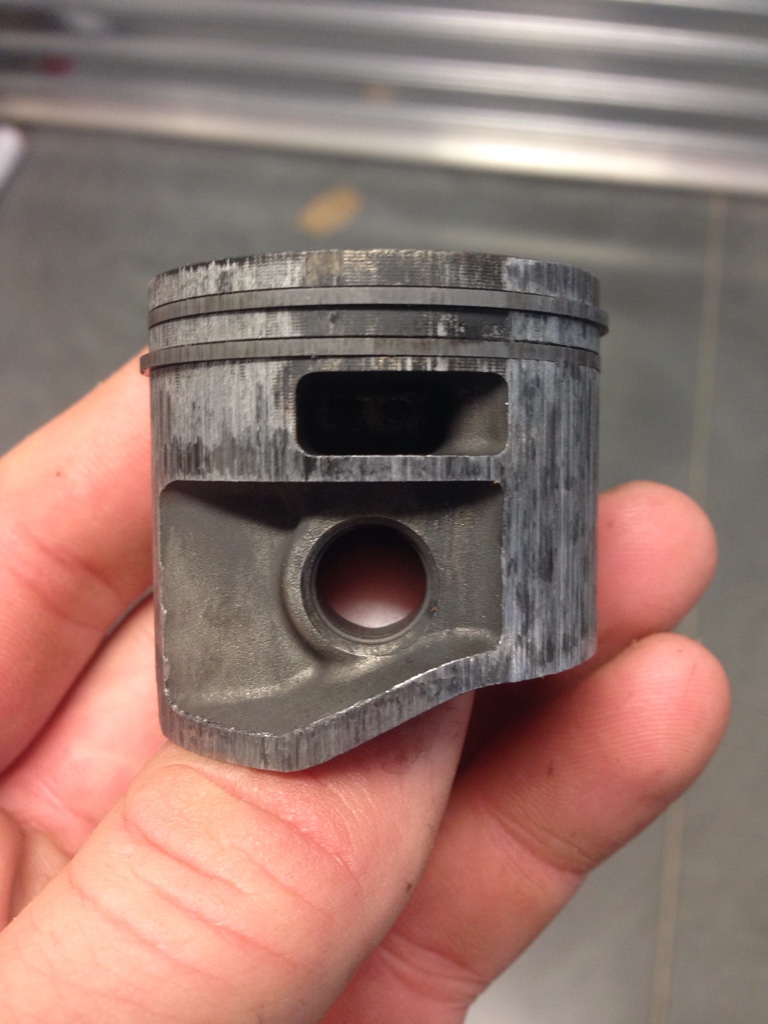2strokenut
One nut loose
just dont jump in to the devil's kitchen

I add oil cos my pappy did, and if it was good enough for him, it's good enough for me.
Y'all can tell me stories about your sciences all you like, but by the power of jebus, if you don't add oil to your fuel y'all go straight to hell's gate and maybe have a nice trip down the west coast of tas. A little fishing, some 4wding, some stout and oysters and.....
But I don't like Oysters?
Not sure why they call them Longhorn Beetle? I think somebody may be dyslexic as they're actually called Longicorn BeetlesThe perfectly rounds holes early are more than likely Longicorn larvae bore holes. Got similar holes in piles of Sugar Gum I have here. The larvae are generally yellow with a black head capsule.
Slowly catching up on posts I've missed. Been busier than a one legged man in an arse kicking contest...

so does my 18 month old nephew,who can also spray you with a foul smelling repellant substance,that causes you to drop him.










You're right, and it's got nothing to do with oysters.You're weird. ..
good to see your back boss this mobs been hard as cats to herd without your whip cracking over head ,,,yeah the name is longicorn tho it seems to be slipping to the vernacular of longhorn even in scientific links use a common naming.. I suspect it due to the adults having big antennae or is that antenii meh
I too was unconvinced was longihornycornyii,,,, as too big a hole but nuthin else fitted the evidence or was suspected other than 20mm drill bit
http://www.ozanimals.com/wildlife/Insect/Longicorn Beetles.html
Coptocercus rubripes is a longicorn (longhorn) beetle with elongated brown body. The wing covers have long angular yellowish markings and a small spine at the end of each wing cover. The antennae are longer than the body and spined.
View attachment 431921
amazin critter they can squeal eeerrk when you pick em up
You're right, and it's got nothing to do with oysters.
Rumour has it he can talk about chainsaws and trees and guns and nice little kitty cats being murdered for hours and hours.
Edit - see above. Apparently this is being an "agronomist".
I've killed a cat with a hay mower, and I like teasing friends and agronomists.Well I was going to talk about Alkaline Hydrolysis and micronutrient chelation plus how Calcium moves with mass flow in the xlyem but thought I'd just lose too many friends againAfter closely studying the group I realised that we all hate cats but like guns and chainsaws. I'm yet to kill a cat with a chainsaw though. I'm not THAT wierd. Although I did kill a Ringtailed Possum once with a chainsaw and a falling tree. By accident...
I've killed a cat with a hay mower, and I like teasing friends and agronomists.
Re grub holes, I have been advised that the holes are most likely made by, and I quote -
*****
" Could be either Cossid or Hepialid larva, a lot bore into roots,
others into trunks.
Be too big for a timber moth, Xyloryctidae family.
Don Herbison-Evans' site is a good moth and caterpillar resource.
http://lepidoptera.butterflyhouse.com.au/moths-imago.html "
*****
Many thanks D.F.

Cossid larvae, nice one that get you club house leader odds on the ol witchery grub eh reckon be big enuff for that cavity & reminds me gee i like lady's with small hands
View attachment 431930
Auto stop nozzles extra. The containers come like shown in the photo. Can get a cheap normal nozzle for around $5That'd be a cheap way to get a 5l auto stop fuel can and get 5l of fuel free, right?
What sort of ******** adds oil to their fuel anyway?
